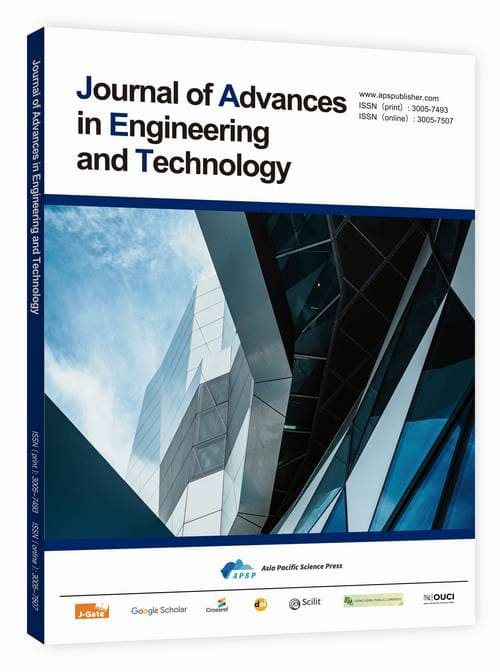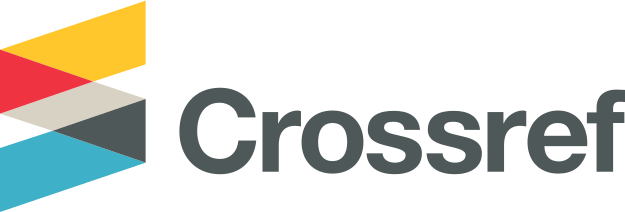Machine Learning for Real-Time Detection of Microbial and Chemical Contaminants in Food
DOI:
https://doi.org/10.62177/jaet.v2i3.477Keywords:
Food Safety, Microbial Contamination, Chemical Residues, Machine Learning, Real-Time Detection, Spectroscopy, Biosensors, CNN, SVMAbstract
Ensuring food safety requires accurate, rapid, and scalable methods to detect microbial and chemical contaminants in various food products. Traditional laboratory-based testing methods, although accurate, are often slow, resource-intensive, and unsuitable for real-time decision-making in production environments. Recent advancements in machine learning (ML) offer new opportunities to automate and accelerate contaminant detection. This paper proposes a machine learning-driven framework that leverages data from portable spectroscopy devices, biosensors, and smart imaging systems to detect bacterial contamination (e.g., E. coli, Salmonella) and chemical hazards (e.g., pesticides, heavy metals) in real-time. The framework includes supervised learning models such as support vector machines (SVM), convolutional neural networks (CNN), and gradient boosting classifiers trained on high-dimensional spectral and biochemical datasets. Results demonstrate high classification accuracy (>95%) with reduced false positives, making the system suitable for deployment in food processing and inspection workflows. This research underscores the value of ML in enhancing food safety monitoring and provides a foundation for future AI-integrated quality assurance systems.
Downloads
References
Haji, M., Kerbache, L., & Al-Ansari, T. (2022). Food quality, drug safety, and increasing public health measures in supply chain management. Processes, 10(9), 1715.
Jin, J., Xing, S., Ji, E., & Liu, W. (2025). XGate: Explainable Reinforcement Learning for Transparent and Trustworthy API Traffic Management in IoT Sensor Networks. Sensors (Basel, Switzerland), 25(7), 2183.
López-Gálvez, F., Gómez, P. A., Artés, F., Artés-Hernández, F., & Aguayo, E. (2021). Interactions between microbial food safety and environmental sustainability in the fresh produce supply chain. Foods, 10(7), 1655.
Choi, J., Lee, S. I., Rackerby, B., Moppert, I., McGorrin, R., Ha, S. D., & Park, S. H. (2019). Potential contamination sources on fresh produce associated with food safety. Journal of Food Hygiene and Safety, 34(1), 1-12.
Elegbeleye, J. A., Oyeneye, K. O., Akinboboye, O. A., & Abere, E. G. (2023). The economic cost of food recall. Food Safety and Toxicology: Present and Future Perspectives, 223.
Nyenke, C. U. (2024). EMERGING TECHNIQUES IN MALARIA DIAGNOSIS. Issues on Health Science, 1, 1-16.
Dutta, P. K. (2025). Implementing agile healthcare frame works in the context of low income countries: Proposed Framework and Review. arXiv preprint arXiv:2502.10403.
George, A. S., Baskar, T., & Srikaanth, P. B. (2024). Cyber threats to critical infrastructure: assessing vulnerabilities across key sectors. Partners Universal International Innovation Journal, 2(1), 51-75.
Guo, L., Hu, X., Liu, W., & Liu, Y. (2025). Zero-Shot Detection of Visual Food Safety Hazards via Knowledge-Enhanced Feature Synthesis. Applied Sciences, 15(11), 6338.
Dayıoğlu, M. A., & Turker, U. (2021). Digital transformation for sustainable future-agriculture 4.0: A review. Journal of Agricultural Sciences, 27(4), 373-399.
Rajasathiya, K., & Palanikumar, R. (2024, December). A Review of Machine Learning and IoT Approaches for the Soil Quality Assessment in Agricultural and Land Management. In 2024 4th International Conference on Ubiquitous Computing and Intelligent Information Systems (ICUIS) (pp. 1712-1719). IEEE.
Mirindi, D., Sanders, T. N., & Hunter, J. (2024). Integration of artificial intelligence and smart technologies in offsite construction: a comprehensive review. Transforming Construction with Off-site Methods and Technologies.
Nain, G., Pattanaik, K. K., & Sharma, G. K. (2022). Towards edge computing in intelligent manufacturing: Past, present and future. Journal of Manufacturing Systems, 62, 588-611.
Wirth, D. A. (2023). The Food Safety Modernization Act and international trade rules. In Research Handbook on International Food Law (pp. 261-290). Edward Elgar Publishing.
Radomirović, M., Gligorijević, N., & Rajković, A. (2025). Immuno-PCR in the Analysis of Food Contaminants. International Journal of Molecular Sciences, 26(7), 3091.
Plebani, M., Nichols, J. H., Luppa, P. B., Greene, D., Sciacovelli, L., Shaw, J., ... & Lippi, G. (2025). Point-of-care testing: state-of-the art and perspectives. Clinical Chemistry and Laboratory Medicine (CCLM), 63(1), 35-51.
Kühl, N., Schemmer, M., Goutier, M., & Satzger, G. (2022). Artificial intelligence and machine learning. Electronic Markets, 32(4), 2235-2244.
Sharma, S., & Tharani, L. (2024). Optical sensing for real-time detection of food-borne pathogens in fresh produce using machine learning. Science Progress, 107(2), 00368504231223029.
Benefo, E. O., Karanth, S., & Pradhan, A. K. (2022). Applications of advanced data analytic techniques in food safety and risk assessment. Current Opinion in Food Science, 48, 100937.
Patel, D., Bhise, S., Kapdi, S. S., & Bhatt, T. (2024). Non-destructive hyperspectral imaging technology to assess the quality and safety of food: a review. Food Production, Processing and Nutrition, 6(1), 69.
Wang, J., Tan, Y., Jiang, B., Wu, B., & Liu, W. (2025). Dynamic Marketing Uplift Modeling: A Symmetry-Preserving Framework Integrating Causal Forests with Deep Reinforcement Learning for Personalized Intervention Strategies. Symmetry, 17(4), 610.
Vanaraj, R., IP, B., Mayakrishnan, G., Kim, I. S., & Kim, S. C. (2025). A Systematic Review of the Applications of Electronic Nose and Electronic Tongue in Food Quality Assessment and Safety. Chemosensors, 13(5), 161.
Tan, Y., Wu, B., Cao, J., & Jiang, B. (2025). LLaMA-UTP: Knowledge-Guided Expert Mixture for Analyzing Uncertain Tax Positions. IEEE Access.
Morawska, K., Sikora, T., Grabka, M., Wiśnik-Sawka, M., & Witkiewicz, Z. (2025). Early Detection of Threat Agents, a Review of Bioimmunosensors and Their Prospects. Critical Reviews in Analytical Chemistry, 1-15.
Xing, S., Wang, Y., & Liu, W. (2025). Multi-Dimensional Anomaly Detection and Fault Localization in Microservice Architectures: A Dual-Channel Deep Learning Approach with Causal Inference for Intelligent Sensing. Sensors.
Chhetri, K. B. (2024). Applications of artificial intelligence and machine learning in food quality control and safety assessment. Food Engineering Reviews, 16(1), 1-21.
Liu, Y., Guo, L., Hu, X., & Zhou, M. (2025). Sensor-Integrated Inverse Design of Sustainable Food Packaging Materials via Generative Adversarial Networks. Sensors.
Mahto, M. K. (2025). Explainable artificial intelligence: Fundamentals, Approaches, Challenges, XAI Evaluation, and Validation. In Explainable Artificial Intelligence for Autonomous Vehicles (pp. 25-49). CRC Press.
Li, P., Ren, S., Zhang, Q., Wang, X., & Liu, Y. (2024). Think4SCND: Reinforcement Learning with Thinking Model for Dynamic Supply Chain Network Design. IEEE Access.
Shao, Z., Wang, X., Ji, E., Chen, S., & Wang, J. (2025). GNN-EADD: Graph Neural Network-based E-commerce Anomaly Detection via Dual-stage Learning. IEEE Access.
Downloads
How to Cite
Issue
Section
License
Copyright (c) 2025 Yan Chen, Liwei Wang

This work is licensed under a Creative Commons Attribution-NonCommercial 4.0 International License.
















